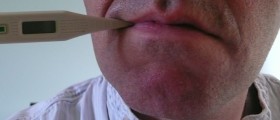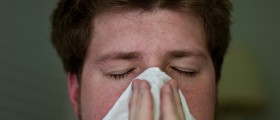
Flu or influenza is surely one of the most common illnesses in the world. During what can be called flu season, this viral infection travels freely and quickly from one person to another, resulting in an epidemic. This disease is not serious or dangerous for healthy people, but in those who already have an underlying disease or have a weak immune system, it can cause significant complications.
During flu season, which is usually fall and early winter, although it can happen in spring too, people become worried about contracting the virus and take care not to come in contact with it, which is, unfortunately, sometimes unavoidable. Many questions arise at that time, and questions about the virus incubation period is one of them.
Flu incubation period
Seasonal flu occurs annually, and usually starts at fall. It is caused by influenza viruses, which are divided into three types- viruses A, B and C, with influenza C being less common than other two types and causing milder symptoms. Pandemic fu, on the other hand, happens rarely, but when it does, it affects the larger portion of the world’s population.
When a person comes in contact with influenza virus, he or she does not get ill immediately. Viruses require some incubation time, which is the time elapsed between the contraction of the virus and the onset of the first symptoms. For most influenza viruses, this period ranges from one to four days. In some cases it requires only one day, however, the average incubation period is two days.
There is also a period called virus shedding period. This refers to the period when an infected person sheds off the virus infecting other people. T begins one day before the symptoms starts, which is unfortunate, since there can be no warming for others that the person is in fact infected, and lasts from five to seven days. A person is the most infectious on the second and the third day after the infection.
Symptoms and treatment for flu
The most characteristic flu symptom is fever, which usually starts suddenly, and in adults reaches over 101F, while in children it goes from 103 to 105F. The fever is accompanied by chills, fatigue, muscle ache, headache, and sometimes dry cough. Other symptoms include runny nose, nasal congestion, sneezing, sore throat and loss of appetite.
There are antiviral medications that can be administered as soon as the symptoms start, and they can shorten the period of illness, although most people just take over-the-counter medications and home remedies that alleviate the symptoms.
It is important to take plenty of rest and to drink a lot of fluids, preferably plain water, juice, herbal teas, and warm soup.

















Your thoughts on this
Loading...